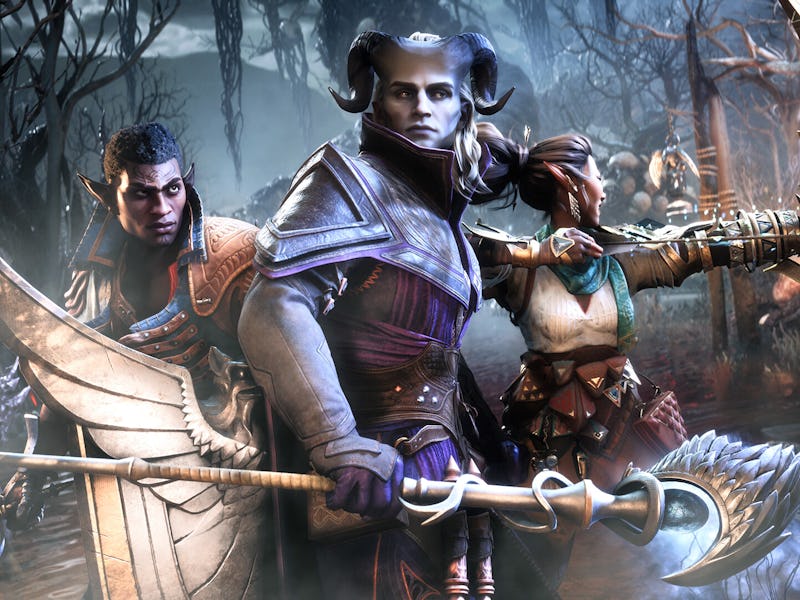Dragon Age: The Veilguard Will Avoid PC Gaming's Most Annoying Trend
BioWare's highly anticipated RPG will run on almost anything.

Dragon Age: The Veilguard, a sequel ten years in the making, will finally follow up on many of the story threads left hanging at the end of Dragon Age: Inquisition. And thankfully, developer BioWare has revealed that players who haven’t upgraded their hardware since Inquisition’s release aren’t likely to have any insurmountable issues jumping into the next game in the series.
BioWare revealed the minimum PC requirements for the upcoming role-playing game, and to the surprise of many, the game will be fairly easy to get going even on aging hardware. The game will run on a NVIDIA GTX 970 GPU or an AMD R9 290X. Both of these graphics cards are a decade old and would have been considered cutting-edge upgrades at the time of Inquisition’s release in November 2014. The game will also support HDD’s for those who haven’t upgraded their storage to something with a bit more reading speed.
For those with beefier hardware, The Veilguard will have plenty of range. The game’s recommended requirements list the six-year-old NVIDIA RTX 2070 or its AMD equivalent, the Radeon RX 5700XT. Regardless of their graphics card, players will need 16 GB of RAM, double what Inquisition required back in 2014.
Dragon Age: The Veilguard will run fine on machines as old as a decade.
The Veilguard’s ability to run on lower-end machines is a welcome break from what’s been expected of new AAA game releases in recent years. There’s no shortage of games requiring newer hardware, yet still have trouble running as stable as their console counterparts. Last year, Star Wars Jedi: Survivor, another EA-published game, shipped in a disastrous state on PC. The Star Wars Souls-like is still receiving patches more than a year later.
By targeting ten-to-six-year-old graphics cards, BioWare is avoiding the same controversy that plagued otherwise great games on the platform, including The Last Of Us: Part 1 and Dragon’s Dogma at launch. It’s also worth noting that the humble specs aren’t coming at the cost of great visuals. Pre-release footage of The Veilguard in action shows that the game looks great. It's likely to be another example of great graphics not being entirely dependent on lifelike fidelity, but on strong, cohesive art direction, a distinct color palette, and consistent performance.
It's not too surprising that The Veilguard will run on a wide range of machines. Last month, BioWare confirmed it will be SteamDeck verified at launch.
Dragon Age: The Veilguard is a sequel ten years in the making, and a return to form for developer Bioware.
With The Veilguard being so versatile in its performances, it will be interesting to see if EA has an interest in porting the game to the still very popular last-gen consoles. Earlier this month, the publisher announced a release date for Xbox One and PS4 versions of Star Wars Jedi: Survivor, an effort to capitalize on the millions of players who haven’t made the jump to current generation hardware. There are no doubt millions of players without a PlayStation 5 or Xbox One who’d happily pick up BioWare’s returned-to-form if made available on their platform of choice.